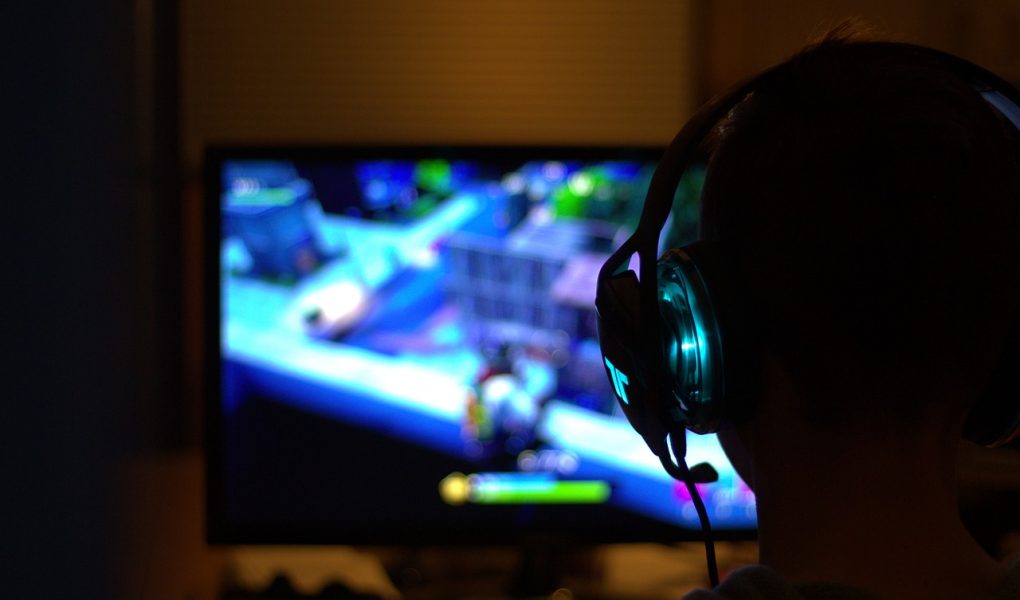Are you a game developer or a writer looking to create captivating dialogue for your video game characters?
Writing compelling game dialogue that engages players and enhances the overall gaming experience can be a challenging task.
However, with the advent of artificial intelligence (AI) models like ChatGPT, the process can become significantly easier and more efficient.
In this tutorial, we will explore how ChatGPT can help you with writing game dialogue and provide practical tips for optimizing your dialogue writing process.
What is ChatGPT?
ChatGPT is an advanced language model developed by OpenAI. It is built upon the powerful GPT-3.5 architecture and trained on a vast amount of text from the internet, including books, articles, and websites.
ChatGPT has the ability to generate human-like text responses based on the input it receives. It can carry on interactive conversations, answer questions, and provide creative suggestions. This makes it an excellent tool for assisting in the process of writing game dialogue.
Generating Engaging Dialogue with ChatGPT.
1. Brainstorming Ideas.
Brainstorming is a crucial step in the game dialogue writing process. It involves generating a multitude of ideas, concepts, and possibilities that can serve as a foundation for your game’s dialogue.
ChatGPT can be an invaluable tool during this phase, helping you expand your creativity and explore new directions. Here’s how you can effectively use ChatGPT for brainstorming ideas:
a. Prompting for Character Personalities.
When creating game dialogue, it’s essential to have well-defined and unique characters. You can leverage ChatGPT to help you brainstorm different character personalities.
For example, you can provide a prompt like, “Help me create dialogue for a cunning antagonist character.”
ChatGPT will generate responses that can give you insights into the mindset, speech patterns, and motivations of a cunning antagonist. These responses can spark new ideas and guide your character development process.
b. Exploring Dialogue Themes.
Dialogue themes play a crucial role in shaping the narrative and tone of your game.
By providing ChatGPT with prompts related to specific dialogue themes, you can explore different perspectives and generate interesting ideas.
For instance, you can prompt ChatGPT with, “Suggest dialogue ideas centred around themes of betrayal and redemption.” ChatGPT can provide you with various dialogue snippets or character interactions that revolve around those themes, giving you a starting point for further development.
c. Getting Unconventional Perspectives.
Sometimes, the most innovative ideas come from thinking outside the box. ChatGPT can help you break free from conventional patterns and provide fresh perspectives. You can ask ChatGPT to imagine a scenario from the viewpoint of an unconventional character or even an inanimate object. For instance, you can prompt ChatGPT with, “Imagine you’re a mischievous talking cat in a magical world. What kind of dialogue would you have with the main character?” ChatGPT’s responses can offer unexpected and imaginative ideas that can breathe life into your game’s dialogue.
d. Refining Ideas through Iteration.
Brainstorming is an iterative process, and ChatGPT can be a valuable collaborator in refining your ideas. After receiving initial responses, you can further engage with ChatGPT to explore variations or seek clarification.
For example, if ChatGPT suggests a potential dialogue snippet, you can ask it to elaborate on specific aspects or provide alternative lines to experiment with different tones or emotions. This iterative feedback loop with ChatGPT can help you polish and strengthen your ideas.
Remember, while ChatGPT can assist in generating ideas, it’s crucial to exercise your own creative judgment and adapt the suggestions to suit your game’s specific needs. ChatGPT serves as a catalyst for inspiration, providing you with a broad range of possibilities to explore.
Embrace the collaborative nature of the tool and leverage its capabilities to unlock your creative potential during the brainstorming phase.
2. Character Development.
Well-developed characters are essential for creating memorable game dialogue. ChatGPT can assist in fleshing out your characters by simulating conversations with them. You can engage in a back-and-forth dialogue with ChatGPT, assuming the role of different characters, and explore their unique voices and perspectives.
This interactive process can help you understand your characters better and ensure their dialogue remains consistent and true to their personalities throughout the game.
3. Writing Natural Dialogue
One of the key challenges in writing game dialogue is making it sound natural and realistic. ChatGPT can offer valuable suggestions to improve the flow and authenticity of your dialogue.
By providing ChatGPT with a snippet of existing dialogue, you can ask it to continue the conversation or suggest alternative lines. This iterative process can help you refine your dialogue until it feels natural and resonates with players.
4. Enhancing Emotional Impact
Emotional depth in game dialogue is crucial for immersing players in the game world. ChatGPT can aid in enhancing the emotional impact of your dialogue by suggesting evocative language and providing insights into characters’ emotions.
You can describe a specific scene or moment to ChatGPT and ask it to generate dialogue that elicits a particular emotional response, such as excitement, sadness, or tension. This can help you create more immersive and emotionally engaging game experiences.
5. Exploring Dialogue Choices.
Branching narratives and player choices are integral parts of many games. ChatGPT can assist in designing dialogue choices and their corresponding outcomes. By describing a dialogue scenario and possible player responses, you can ask ChatGPT to generate compelling follow-up dialogue based on each choice.
This can save you time and effort by quickly exploring different narrative paths and ensuring that the consequences of player choices are consistent and well-crafted.
Best Practices for Using ChatGPT.
While ChatGPT can be a powerful tool for writing game dialogue, it’s essential to use it effectively. Here are some best practices to optimize your experience:
1. Provide Clear Prompts.
When using ChatGPT to generate game dialogue, providing clear and specific prompts is essential for getting the most relevant and accurate responses. Clear prompts help ChatGPT understand your requirements and produce dialogue suggestions that align with your creative vision. Here are some tips for providing clear prompts:
a. Specify the Character or Setting.
Start your prompt by clearly specifying the character or setting for which you need dialogue suggestions. This helps ChatGPT focus on generating dialogue that is appropriate for the specific context. For example, you can begin with prompts like, “Provide dialogue ideas for a wise old wizard named Gandor,” or “Suggest dialogue options for a futuristic space colony.”
b. Include Relevant Context.
Providing relevant context in your prompts helps ChatGPT better understand the situation and generate dialogue that fits the narrative. Describe the scene, the characters involved, and any important background information.
For example, you could include details such as, “In a tense confrontation between the hero and the villain during the final battle,” or “In a heartwarming conversation between two childhood friends reuniting after years of separation.”
c. Specify the Purpose or Goal.
Clearly state the purpose or goal of the dialogue in your prompts. This gives ChatGPT a clear direction and helps it generate dialogue that serves the intended purpose.
For example, you can specify prompts like, “Suggest dialogue options that convey a sense of urgency and motivate the player to take action,” or “Provide dialogue lines that create a lighthearted and humorous atmosphere during a social gathering.”
d. Ask for Specific Types of Dialogue.
If you have a particular style or tone in mind for the dialogue, make sure to mention it in your prompts. Specify the type of dialogue you are looking for, such as witty banter, emotional monologue, or informative exposition.
This helps ChatGPT generate dialogue that matches your desired style. For instance, you can prompt ChatGPT with, “Give me witty and sarcastic dialogue options for a sassy sidekick character,” or “Provide a heartfelt monologue expressing the protagonist’s inner struggles.
e. Seek Alternative Options or Variations.
To explore different possibilities, you can ask ChatGPT to provide alternative dialogue options or variations. This can help you consider different angles and choose the most suitable dialogue for your game.
For example, you can prompt ChatGPT with, “Suggest two different responses the player can choose from when faced with a moral dilemma,” or “Provide variations of a romantic confession that range from playful to sincere.
By following these tips and providing clear prompts, you can ensure that ChatGPT understands your requirements and generates dialogue suggestions that are tailored to your game’s specific needs. Clear prompts also save time and help you obtain more accurate and useful responses from ChatGPT.
2. Iterate and Refine.
The initial responses from ChatGPT might not always be perfect, but they can serve as a starting point for iteration and refinement.
Experiment with different prompts, ask for variations, and iterate on the generated dialogue until it meets your desired standards. Treat ChatGPT as a creative collaborator rather than a final authority.
3. Maintain Consistency.
As you engage with ChatGPT to develop dialogue for different characters, ensure consistency in their voices, tones, and speech patterns.
Take note of the unique attributes of each character and use that information to guide ChatGPT in generating dialogue that aligns with their established traits.
4. Exercise Judgment.
While ChatGPT can provide helpful suggestions, remember that it’s ultimately your creative vision and judgment that should guide the dialogue writing process.
Use ChatGPT’s responses as inspiration and tools for efficiency, but don’t rely solely on its suggestions. Your expertise and creative instincts are crucial for crafting a unique and compelling game narrative.
Conclusion.
Incorporating ChatGPT into your game dialogue writing process can significantly enhance your efficiency, creativity, and the overall quality of your game’s narrative.
From brainstorming ideas and character development to writing natural dialogue and exploring dialogue choices, ChatGPT offers valuable assistance at every step.
Remember to follow the best practices outlined in this tutorial to optimize your experience with ChatGPT and ensure that the dialogue remains consistent, engaging, and true to your creative vision.
Happy writing!




